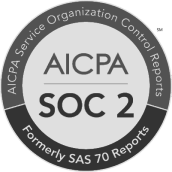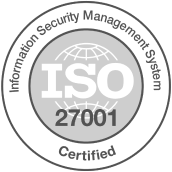In the world of business, empires have been built from scratch with the help of innovative pitch decks. One of the single biggest pillars that get the moolah in your business, pitch decks are absolutely crucial for entrepreneurs, especially ones creating their own start-ups.
For the fruits of the investment to be sweet, one needs to go through a systematic approach that involves a multi-layered process. This is exactly what we aim to figure out here – everything one needs to know to prepare for creating the ultimate pitch deck.
But before we get into that, let us try and understand what a pitch deck entails at its core.
What is a Pitch Deck?
For funding your business, you need money and more often than none, you need to rely on investors who would take an interest in your business and invest in it. This involves pitching to them as to why your ideas are worth their money.

A pitch deck is a concise presentation given to potential investors that help in providing an informative overview of your company, project, and/or idea. Also known as a slide deck, it helps in giving your potential investors a better idea about your business plan, target audience, goals, valuation, and of course, your product and service.
Key Elements of a Pitch Deck
A successful entrepreneur employs both textual and visual (and sometimes even audio) slides and usually takes the help of a software program. Although different entrepreneurs might have different approaches to a pitch deck, most of them include the following elements.
Introduction
The first part of your pitch deck should be able to introduce your business, project, and/or idea. Keep it brief and let your potential investors know who you are and why you are here. It is also wise to include your USP (Unique Selling Point) in this section.
Problem
This element entails the problems you are aiming to solve and how relevant it is. You would also be able to show your potential investors the necessity of your project, product, and/or service. Basically, you want to show your investors that your product or service promises to solve an existing issue that affects one or more demographics.

Target Audience
This section requires you to define the market that you would be catering to. You need to talk about which section of the population would be seeking your product or service. Your target audience would usually share some common features.
Target Market
In the same line as your audience, your target market would give your potential investors a better idea of the competitiveness of the business you are in. This would assist them in understanding how lucrative the project is, the size of your market, how many competitors you would be facing, and how feasible the landscape of the business is, among others.
Solution
In relation to the problem, you need to showcase how exactly you intend to get rid of the problem. Try and incorporate a narrative tone to impart this piece of information. If you are already an existing establishment, include stories of your loyal customers.
Explain to your investors how different your solution is from the existing solutions in the market, how much evolved or better it is, and how it can bring about parity in the market.
Strategy
This part involves defining how you would reach from ‘Point A’ to ‘Point B’. Letting your marketing and sales strategy be known to your potential investors will help them in understanding how your project would pan out and how your product or service would be advertised and sold.
Traction
At the end of the day, the business world values metrics. Investors look for quantifiable measurements for assessing the viability of the project. So, showing your month-over-month growth, yearly turnover, major milestones, profit margins, and annual revenue can boost your chances of procuring the investment.
Remember, Traction = Revenue & not just MVP creation.
Finance
For measuring your reliability, investors want to look at the financial health of your company. Include your projected growth, income statements, and other finance-related information in our pitch deck. Also, this is where you let them know how much funds you are looking for to reach the desired result. Benchmarking your financial performance with parallel competitors or industry benchmarks to draw deeper insights.

Functionality
Give a sneak peek of how your product or service would work. You essentially want to let your investors know of the mechanism of your project. Make sure you don't just speak about features, focus on the value created aspect.
Team
Although not an absolute necessity, describing the key people involved in the project and their roles in it would help the investors in figuring out the management. It might also instill more trust in them when they see how organized you are. It would also allow them to get acquainted with the credibility and expertise of your team.
Now that you are aware of the key basic aspects to include in your pitch deck to heighten its potential, here are some bonus pointers for you to get your ideas rolling further.
Things to Keep in Mind to Make a Pitch Deck Successful
While putting down the elements of your pitch deck, try to incorporate the following tips to improve your content.
Build a Story
Including metrics, stats, and facts are obviously important. But don’t just make your pitch deck look like a mini-encyclopedia. Have a narrative approach towards your pitch deck and make it more relatable to your potential investors.
Infographics
Make use of graphical elements as much as possible in the form of bar graphs, pie charts, and comparative charts, among others. Not only do they make your pitch deck more dynamic and engaging, but they also let your investors know how much effort has gone into it.
Personalization
Using the same pitch deck on multiple investors is fine. However, it would be beneficial if you tweak it to make it more personable to the concerned investor you are about to pitch. In addition, be sure to keep updating it with the latest milestones and other related recent metrics.
Less is more
Telling your story in minimal words is an art. You don’t want to throw in every bit of information since it would only overwhelm them. No one has the time or energy to consume long, text-heavy slides. Most of the time, less is more. Be straightforward and concise without losing the crux of your pitch deck.
One Idea per Slide
In the same line of thought as the previous point, try not to overcomplicate your pitch deck. One thing that you want to avoid is cluttering. So, try and limit only one idea in each slide of your presentation. This will give more clarity to your content and keep your audience engaged.
Consistency
Have a signature style to your entire pitch deck. Making your pitch deck doesn’t mean changing the tone of your language, font size, color, and capitalization different in every slide. Bring some consistency to your work.

Don’t Start Reading
You don’t want to be the person who reads out word by word from your slide. So, while making the presentation, make it more zestful by adding your own input (without straying from the subject).
Know Your Content
You should know what you are talking about. Your investors will ask questions about data in the pitch. So, do your research and come well-prepared so that instead of fumbling, you can confidently address their queries.
Final Thoughts
A pitch deck is one of the most important tools to kick-start your business and keep it running. No matter how great your ideas are or how brilliant your products and services are, if you can’t fund them, they will likely never see the light of day. And a pitch deck is the biggest weapon in your arsenal to get funding.
If you are dealing with a pitch deck for the first time in your life and have got no clue how to get started, the blueprint discussed here will go a long way in keeping your focus to the point. Even those who have been struggling with formulating a pitch deck that ends up sealing the deal can make use of a blueprint.
Remember, this is not a hard and fast rule. Be sure to always be flexible and be open to including your innovative touch to it.





